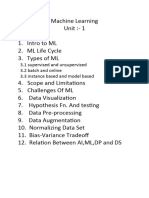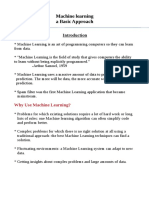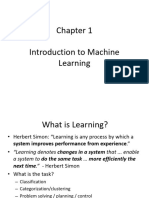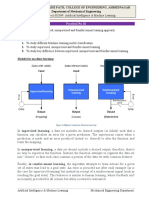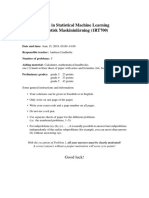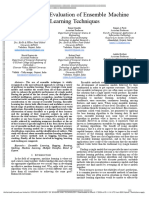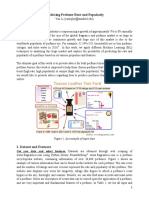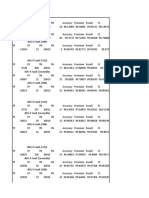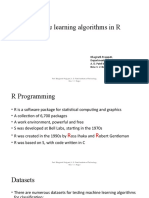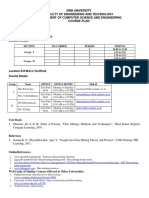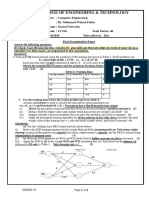100% found this document useful (1 vote)
84 views8 pagesSection2 ML
The document outlines the distinctions between Artificial Intelligence (AI), Machine Learning (ML), and Deep Learning (DL), with AI being the broadest concept that mimics human capabilities, ML as a subset that learns from data patterns, and DL as a specialized area using neural networks. It details various types of machine learning, including supervised, unsupervised, semi-supervised, and reinforcement learning, along with their techniques, applications, and advantages. Additionally, it describes the machine learning life cycle, which includes steps from data gathering to model deployment.
Uploaded by
tabedo6789Copyright
© © All Rights Reserved
We take content rights seriously. If you suspect this is your content, claim it here.
Available Formats
Download as PDF, TXT or read online on Scribd
100% found this document useful (1 vote)
84 views8 pagesSection2 ML
The document outlines the distinctions between Artificial Intelligence (AI), Machine Learning (ML), and Deep Learning (DL), with AI being the broadest concept that mimics human capabilities, ML as a subset that learns from data patterns, and DL as a specialized area using neural networks. It details various types of machine learning, including supervised, unsupervised, semi-supervised, and reinforcement learning, along with their techniques, applications, and advantages. Additionally, it describes the machine learning life cycle, which includes steps from data gathering to model deployment.
Uploaded by
tabedo6789Copyright
© © All Rights Reserved
We take content rights seriously. If you suspect this is your content, claim it here.
Available Formats
Download as PDF, TXT or read online on Scribd
/ 8







